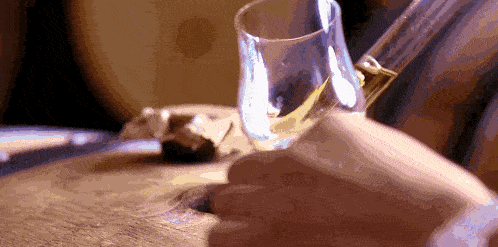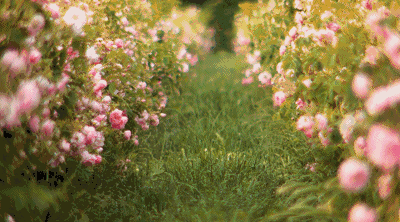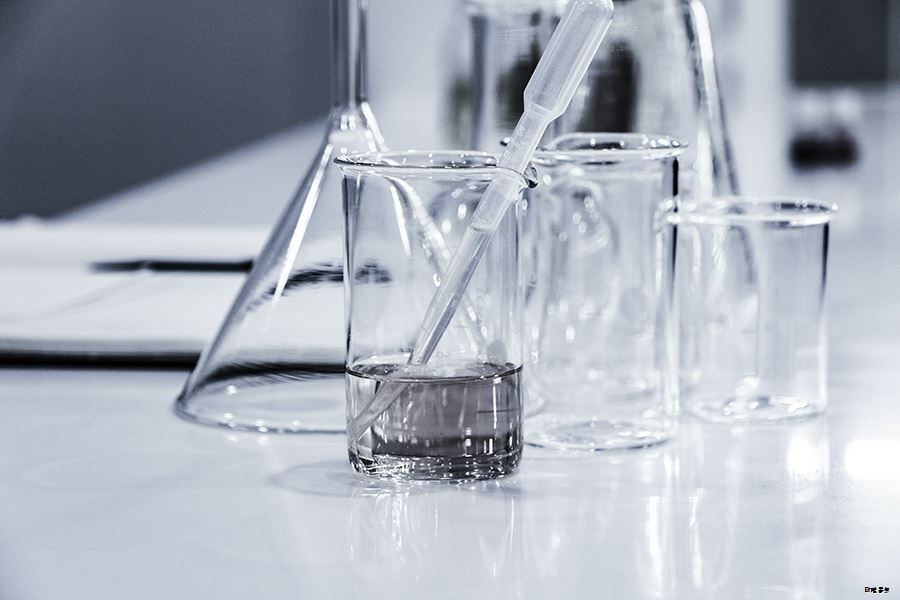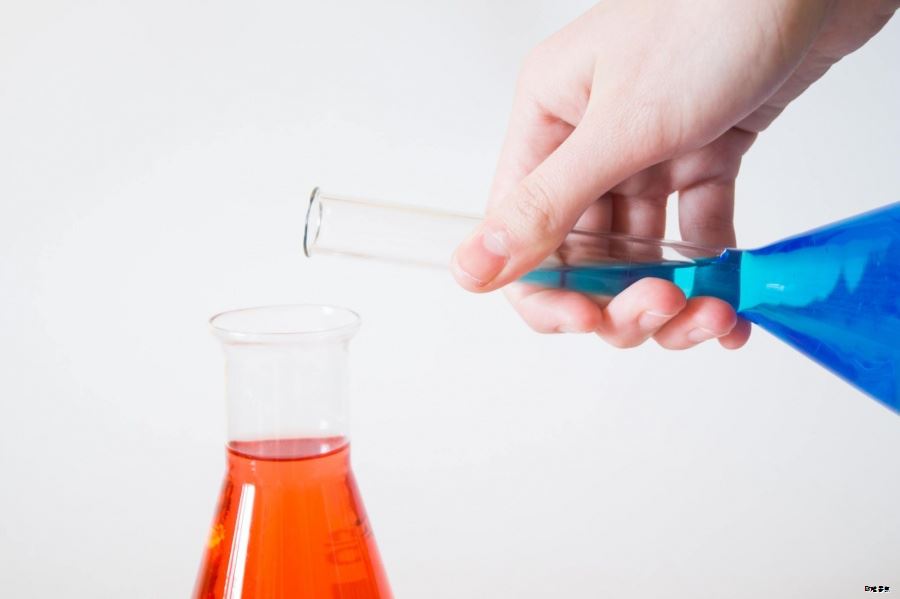Looking at the back or bottom of a perfume box, we can find the alcohol content of the perfume, with common percentages ranging from 72% to 81%, with the most common being 80%. So, the question arises: why, despite the high alcohol content in perfumes, much higher than that of fragrance oils, is the alcohol smell not prominent?
**Discovery of Alcohol**

The appearance and origin of alcohol in human history remain uncertain. The ability of humans to metabolize alcohol is believed to be due to genes inherited from our primate ancestors, who frequently consumed overripe fruits, leaving behind such genetic traits. The earliest discovery of alcoholic beverages dates back to the New Stone Age over ten thousand years ago in a prehistoric tomb near Haifa, Israel, made from fermented wheat and barley. In China, remnants of ancient wine dating back to approximately 7,000 years ago were found in the Jiahu site in Henan, composed of grapes, hawthorn, honey, and rice. According to the Guinness World Records, the earliest evidence of grape wine production can be traced back to around 6,000 BC in Georgia. However, from alcoholic beverages to the use of alcohol in perfume making, it took a long journey involving the discovery, purification, and utilization of alcohol.
Ancient philosophers Aristotle and Theophrastus (4th century BC) noticed that gases emitted by wine could ignite. The Persian alchemist Jābir ibn Hayyān (9th century AD), also known as Geber, mentioned in his works that adding salt to boiling wine could increase its volatility, and the wine vapors would become more flammable. In the 9th to 10th centuries, Persian physician Rāzi (Rhazes) was widely recognized as the first person to separate alcohol, while Arab philosophers al-Kindi, Persian physician al-Farabi, and Arab medical scholar al-Zahrawi (known as Albucasis in Latin) all confirmed the distillation of alcohol in their works. In the 11th century, Persian philosopher Ibn Sina (known as Avicenna to Europeans) discovered alcohol while improving the distillation process for extracting essential oils.
In the 12th century, several Latin works recorded the recipe for producing "burning water" (also known as alcohol) by adding salt to wine and redistilling it. This "burning water" was widely known among Western European chemists by the late 13th century. It was in the 13th century that the Franciscan friar Raymond Lully, known as the "Doctor Illuminatus," first mentioned pure alcohol. However, it wasn't until the late 18th to early 19th century that pure alcohol was prepared by the German-Russian chemist Johann Tobias Lowitz and its chemical formula was determined by the Swiss chemist Théodore de Saussure. In 1858, Scottish chemist Archibald Scott Couper proposed the chemical structure and chemical bond theory, publishing the first set of chemical structures, which included the structure of alcohol. Fifty years later, the golden age of perfumery began.
**Alcohol's Use in Perfumes**

Interestingly, during my research, I found that there is no mention in books or papers about the historical process of using alcohol as a carrier for perfumes, and many online resources avoid discussing it as well. The first recorded alcohol-based perfume appeared out of nowhere in history. It was the "Hungary Water," commissioned by Queen Elizabeth of Poland in 1370, containing mainly rosemary, marjoram, orange blossom, and lemon, and can be considered a precursor to modern eau de cologne. Before Hungary Water's emergence, perfumes were either oil-based, like ancient Egyptian perfumes, or water-based, like rose water imported to China during the Five Dynasties and Ten Kingdoms period. Based on the fragmented clues provided by historical records, I propose a theory to fill in this historical blank and provide a critical view.
Aromatics have always been associated with health and life, catering to the human psyche at all times. In ancient times, aromatic substances were used in religious rituals by priest-doctors who were indistinguishable. The Black Death of 1347-1352 was a significant catalyst for medicinal uses of aromatic substances. In the 13th and 14th centuries, the alchemist Arnold of Villanova manufactured a liquid close to pure alcohol and researched its medicinal uses. The Franciscan alchemist Jean de Roquetaillade referred to alcohol as "water of life," capable of preventing all diseases. During the Black Death, when doctors were helpless, they often could only provide patients with this "water of life." Shortly after, it was a pharmacist (Pierre Guerlain, who also had a background in pharmacy) who formulated the Hungary Water for Queen Elizabeth of Poland, famous for supposedly preserving her youth.
The question of "when did alcohol start being used as a carrier in perfumes" is a flawed question; what we should ask is how a certain type of alcoholic solution gradually evolved into perfume. From this perspective, perfumers inherited the true teachings of alchemists, and perfumes became the philosopher's stone. Alchemists had long mastered distillation and applied it to extract liquid philosopher's stone in hopes of achieving eternal youth. In the eyes of alchemists, alcohol was the essence of sunlight stored in plants, and sunlight was the gold in the sky. Many alchemists, often also physicians, had used alcohol to steep various fragrant materials since the 10th century when they started paying attention to alcohol. This was the prototype of alcohol-based perfumes, and this method is still used today in producing tinctures.
**Alcohol's "Invisibility"**

The second crucial question about alcohol is why, despite comprising the largest percentage in perfumes, its scent is not prominent. Given the historical and scientific development of alcohol-based perfumes mentioned earlier, it is apparent that people did not initially choose alcohol as a solvent for perfumes based on an understanding of the physical and chemical properties of various solvents. Instead, it was a combination of superstition, fear, fortuitous discoveries, time's sieving, and inheritance that brought alcohol into widespread use as a carrier for perfumes, unbeknownst to the public. From the perspective of modern science, I will belatedly explain how alcohol becomes "invisible" in perfumes.
First, many people associate the pungent smell of alcohol with impurities rather than the alcohol itself. Industrial alcohol is produced through ethylene hydration, and the source of ethylene is petroleum. This type of alcohol contains methanol, which is unsuitable for consumption, medical use, or perfume making. Generally, the alcohol we encounter in daily life is typically made through fermentation of corn or sugarcane, containing impurities such as acetaldehyde and fusel oils, which contribute to the pungent odor. Some forms of alcohol are purposely denatured to
be unfit for drinking, also avoiding taxation as alcoholic beverages in many countries. Early denatured alcohol might have contained dangerous methanol, but that practice is no longer seen today. Instead, they may add bittering agents, emetics, unpleasant pyridine or kerosene, and sometimes even colorants for differentiation. High-end perfumes use alcohol derived from grape fermentation, which inherently has fewer impurities. After undergoing double dehydrogenation, it becomes denatured alcohol free from unpleasant substances and colorants, with the impurities' smell almost negligible. The most luxurious method involves aging alcohol itself using resins, iris, animalic scents, etc. Pure alcohol has a faint scent, and I can even associate it with roses.
Second, after spraying perfume, the alcohol will usually evaporate quickly, leaving behind various fragrant ingredients. This process does not solely rely on the alcohol's maximum saturated vapor pressure (Raoult's law), as perfume is not an ideal solution, and the molecules within it interact through dipole-dipole, hydrogen bonding, London dispersion forces, etc. It follows Henry's law, while the sprayed perfume also undergoes molecular interactions with the surface it lands on. In such cases, considering the alcohol's partition coefficient between octanol and water, the Hill-de-Blanc solubility parameter to evaluate component volatilization, and the linear free energy relationship to predict equilibrium state, are more reasonable approaches. Vapor pressure is indeed a significant factor, as is Kovats' index. Those who are more interested can further explore these terms, while the simpler concept to remember is the principle of "like dissolves like."
Third, from the moment perfume is sprayed from the nozzle or applied to the skin until a person perceives the fragrance, volatility is one aspect, and diffusion (Fick's law) and reception (Stevens' power law) are another aspect. According to previous research results, even when considering only three fragrant ingredients, limonene, linalool, and cis-3-hexen-1-ol, most perfume formulations can achieve complete coverage of the alcohol's scent, whether under ideal or non-ideal conditions. In other words, to accentuate the alcohol's scent in a perfume requires clever formulation and advanced skills, making it quite challenging. For the sake of most fans' mental and physical health, I won't elaborate with a street-performing style here, and you can refer to the book "Perfume Engineering: Design, Performance, and Classification" by Teixeira, Miguel A., et al., for further information.

**Daily Use of Perfumes**
Now that we have a deeper understanding of the relationship between perfumes and alcohol, we can make wiser choices as consumers and remain clear-headed amid extravagant commercial propaganda. For instance, I came across a niche brand that prominently advertised "made only with tinctures, no alcohol smell," and I immediately developed immunity to this hypnotic potion – tinctures are made with alcohol, just like how you would pickle vegetables with salt before stir-frying or adding salt while stir-frying, and they both end up tasting salty.
In the future, when we smell a perfume with a pungent "alcohol smell," it indicates that the perfume did not use the highest quality alcohol, and perhaps the brand is not as upscale as it claims. Understanding how alcohol becomes "invisible" in perfumes can also help us use perfumes more effectively and avoid undermining their optimal effects. For example, if perfume is sprayed on a surface of partially hydrolyzed polyvinyl acetate (used in coatings and textile finishing), the perfume's evaporation curve will be disrupted due to the polyvinyl acetate's Hill-de-Blanc solubility parameter being similar to alcohol, leading to the pungent "alcohol smell" being accentuated.

In conclusion, all theories and models have their premises, which may not apply to all usage scenarios. Therefore, if our life experiences conflict with theoretical analysis, it is likely that the perfume's usage conditions have changed. These conditions include room temperature, absence of convection, micrometer-thin layers, etc. Hence, if you use perfume in extreme weather or apply a thick layer on a specific surface, you should expect a different experience with the same perfume.
OGGNE's science outreach for today comes to an end. I hope that everyone understands that the core function of perfume as a consumer product is to bring joy to consumers' mind and body. So, when we find a fragrance that pleases us, let's set aside preconceived notions and fully enjoy the scent itself, which is the most important aspect.

Tely Yu
Sales Manager
Address: Yashi Science Park No883 Shenzhou Road, Huangpu District, Guangzhou
Contact us: +86 18200660659
Email: sales@oggne.com
